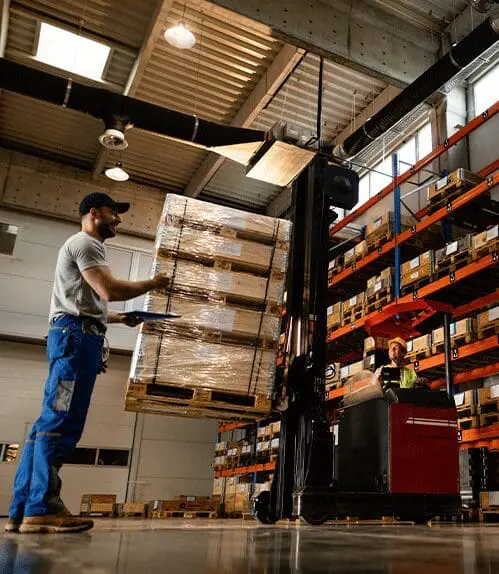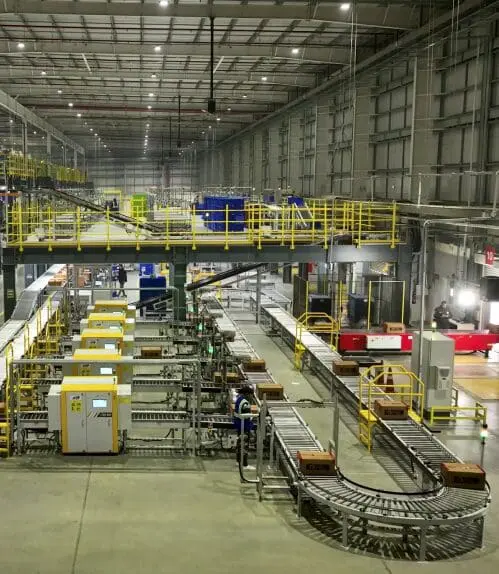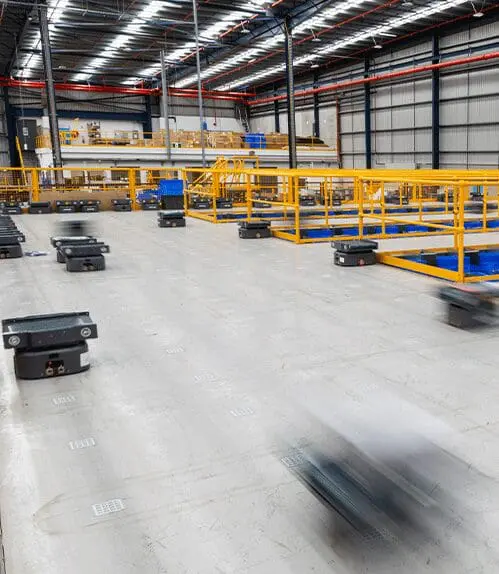Table of Contents
Modern supply chain management relies heavily on effective warehouse order picking. Warehouse managers always struggle to improve their order fulfillment procedures at a time when consumer expectations for prompt and precise delivery are rising. The ability to pick and pack orders promptly, accurately, and affordably can all dramatically impact customer satisfaction, operational effectiveness, and ultimately the bottom line.
Warehouse managers must research and implement efficient order-picking systems and techniques to meet these objectives. Several variables, including the warehouse layout, order volume, product attributes, and personnel capabilities, influence the best strategy choice. Managers can determine the best ways to improve their warehouse order picking operations by weighing several options.
The global warehouse order picking market size was estimated at USD 9.19 billion in 2023 and is expected to grow at a CAGR of 10.8% from 2024 to 2030.
We will examine eight crucial ideas and techniques in this post that warehouse managers should take into account when looking to enhance their warehouse order picking procedures. Understanding how each strategy is applied can help managers make decisions that are well-informed and cater to their particular operational demands. Each strategy has specific advantages and potential drawbacks.
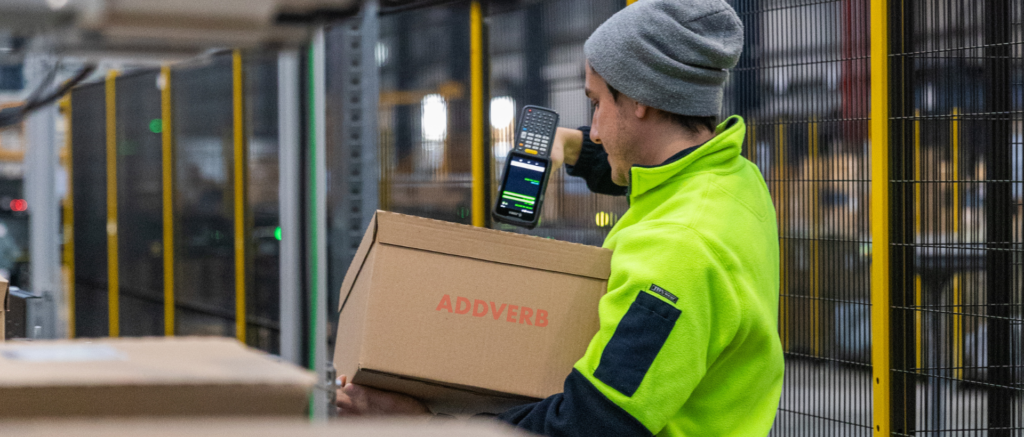
How to improve warehouse picking speed and accuracy?
To improve warehouse efficiency, the first step is designing its layout to optimize logistical flow. Afterwards, the facility should be equipped with the appropriate storage systems, making sure that space is occupied and easily accessible. Employing effective picking methods, such as Zone or Batch picking, minimizes travel time and improves accuracy.
The use of WMS software or mobile devices digitises operations for instant tracking. One may determine optimum pick paths to minimize movement. Some of the KPIs to trace in measuring performance include pick accuracy and cycle time. Ensure to perform slotting strategies for fast-moving items and enhance overall operational efficiency.
Methods to Consider in Warehouse Order Picking
Zone Picking
The practice of zone picking, which is popular in warehouse order picking, is segmenting the warehouse into various zones and allocating distinct pickers to each zone. It is the duty of each picker to select objects only from that region. Picking a zone has many advantages. Pickers are assigned to certain zones, which helps them become more knowledgeable and skilled because they are familiar with the layout and inventory of their designated area.
This comfort increases picking accuracy and lowers the possibility of mistakes. Additionally, pickers can organise their things for quicker and easier access to optimise their efficiency within their zone. Additionally, zone choosing makes the warehouseorder picking in warehousing procedure more efficient and organised. It is simpler to manage and track inventory levels by dividing the warehouse into zones, assuring product availability and avoiding stockouts.
Zone coordination and communication must be efficient for zone picking to be implemented properly. To sustain the flow of orders and avoid delays, proper synchronisation is essential. Order sequencing needs to be clearly defined by warehouse managers so that pickers are aware of which orders to prioritise and pick first.
Batch Picking
Multiple orders are chosen simultaneously rather than one at a time when using the batch approach at warehouse order picking. Pickers gather several products for various orders in a single trip rather than picking each item for each order one at a time, increasing efficiency and cutting down on travel time. Batch picking order has a number of benefits for warehouse operations.
First and foremost, it considerably shortens the distance that pickers must walk inside the warehouse. Pickers can cover a larger number of items in a single pass and spend less time travelling between locations by combining picks for numerous orders. The efficiency of batch picking in handling small orders with overlapping SKUs is another advantage.
The probability of shared SKUs among those orders is increased when products for many orders are picked simultaneously. Warehouse order picking managers must examine order trends, compile related orders, and choose the best batch sizes. Even while batch selection has several benefits, maintaining precision may be difficult. The danger of erroneous item allocation or mispicks increases when numerous orders are handled simultaneously.
Wave Picking
Orders are released in planned waves as part of the wave selection approach used for warehouse order picking. Every wave consists of a collection of orders that are chosen collectively. Consolidating similar orders, cutting down on travel time, and increasing productivity, all contribute to wave picking’s optimization of the warehouse order picking system.
Pickers can reduce the amount of time spent travelling between locations and boost production by collecting many orders in a single wave. But for each wave to be finished on time, efficient order prioritisation and sequencing are crucial. Wave picking order is especially advantageous for high-volume warehouses because order aggregation can quickly and drastically increase throughput.
Pick-to-Light Systems – Rapido
Pick-to-Light systems are a technologically advanced method of picking orders in warehouses. To direct pickers to the appropriate items and quantities, they use LED displays and indications. Every picking point has a light module that turns on when something has to be picked up. The picker moves in accordance with the lit display, which shows the item’s quantity and location.
This solution does away with the requirement for paper picking lists, which lowers errors and increases picking accuracy and speed. Picker training time is reduced with Pick-to-Light systems, which also speed up the order fulfilment process. However, putting this system into place necessitates an initial hardware and software investment in addition to ongoing maintenance expenses.
Addverb’s reliable Rapido is a Pick-to-Light system that guides your workforce to pick the right products and quantities for an order, making it the fastest operator–based picking method for order fulfilment.
Voice-directed Picking – Zesty
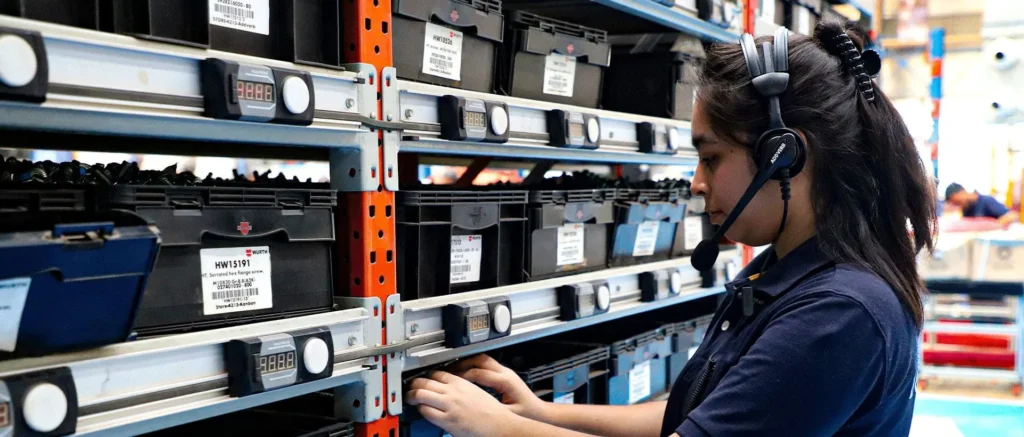
A warehouse order picking technique called voice-directed picking uses speech recognition software to direct pickers through their work. Pickers use a headset to communicate verbally with supervisors about the item, location, and number of picks that need to be made. This hands-free method enhances ergonomics while enabling pickers to concentrate on their jobs.
By doing away with the need for portable scanners or paper-based picking lists, voice-directed picking improves accuracy and efficiency. However, accurate voice recognition might be hampered by background noise or accents, necessitating rigorous training and calibration. Overall, voice-directed warehouse picking strategies increase accuracy and productivity in the warehouse picking by giving pickers simple, understandable instructions.
Addverb’s Pick-by-Voice technology – Zesty streamlines the Warehouse order picking process using voice commands to direct workers without paper or RF devices. It offers quick and accurate item picking and packing through real-time instructions with a user-friendly interface delivered with advanced speech recognition.
Automated Guided Vehicles (AGVs)
AGVs, or automated guided vehicles, are self-driving vehicles used in the warehouse picking strategies to move and deliver goods. These vehicles employ predefined tracks or mapping technology to navigate through the warehouse, doing away with the necessity for manual transportation by warehouse workers. AGVs can swiftly move product racks, bins, or pallets, saving pickers’ time and easing their physical burden.
They promote worker safety, increase productivity, and improve order accuracy. AGV implementation, however, necessitates careful integration with the warehouse infrastructure already in place as well as consideration of technical factors including path planning, obstacle recognition, and upkeep necessities. AGVs are useful piece of equipment that streamlines material handling and minimises human involvement in warehouse operations.
Pick-by-Weight Systems
Scales are integrated into the picking process in pick-by-weight systems, a technique used in warehouse order picking. During the picking process, this device enables quick weight measuring of the objects. Pickers can ensure accuracy and quality control, particularly for expensive or easily misplaced products, by checking each item’s weight.
The pick-by-weight approach can reduce the possibility of distributing the wrong items to consumers by preventing mistakes like under-picking or over-picking. This innovation increases order accuracy, lowers return rates, and boosts client happiness. Pickers must be properly trained to operate pick-by-weight systems, which necessitates an investment in scales and integration with the warehouse management system.
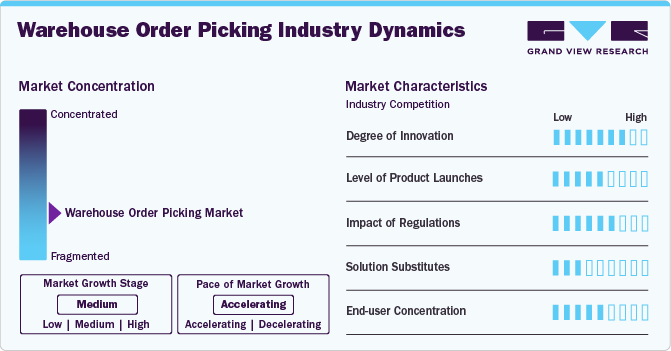
Source: Grand View Research
Mobile Picking Carts
Mobile picking carts are portable workstations used in warehouse order picking operations. These carts are equipped with shelves, bins, and barcode scanners, allowing pickers to efficiently move throughout the warehouse while fulfilling orders. Pickers can organize and store picked items on the cart, reducing the need for multiple trips to central workstations.
The cart provides easy access to inventory, increases picker productivity, and streamlines the order fulfillment process. Mobile picking carts are especially beneficial for warehouses with large or spread-out inventory, as they enable pickers to have all necessary tools and supplies readily available while minimizing travel time.
Addverb’s picking technologies can be easily integrated with existing infrastructure and software systems. Our Warehouse order Picking solutions are designed to increase the productivity of operators working in modern warehouses and satisfy the requirement for fast and accurate picking orders. The solutions ensure efficiency, reliability, and accuracy in picking operations allowing businesses to create healthy bottom lines and drive profitability.
Pick-by-Vision
Addverb’s cutting-edge vision-picking solution, QuiMo provides hands-free access to critical order information and instructions using smart glasses and Augmented Reality (AR) technology. Workers can easily navigate the warehouse and identify items without language complexity or noise interruptions.
Finally…
Supply chain management depends heavily on warehouse order picking, thus warehouse managers must apply smart tactics to enhance order fulfillment processes. Managers can tailor their operations to meet particular requirements and objectives by taking into account different tactics and techniques like zone picking, batch picking, wave picking, pick-to-light systems, voice-directed picking, automated guided vehicles (AGVs), pick-by-weight systems, and mobile picking carts. Each tactic has unique benefits and potential downsides, necessitating careful consideration and use.
By incorporating cutting-edge technologies like Pick-by-Light, Pick-by-Voice, and Pick-by-Vision, such as Addverb’s solutions, warehouse order picking may be made even more effective, dependable, and accurate, improving customer happiness and bottom-line profitability.

Founded in 2016, Addverb offers complete robotics solutions for warehouse and industrial automation, with a strong global presence through its subsidiaries worldwide. The company provides a range of in-house automation products, including Autonomous Mobile Robots, ASRS, and sorting technologies. It serves over 350+ clients, including well-known companies such as Coca-Cola, Amazon, and DHL

